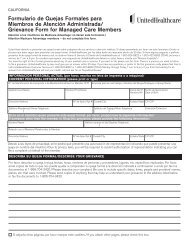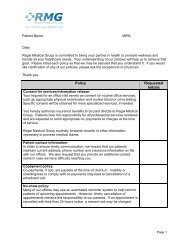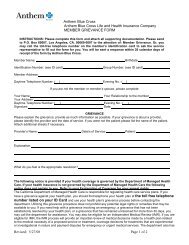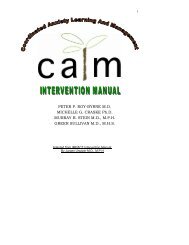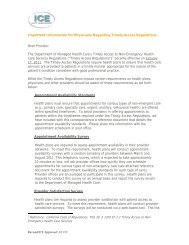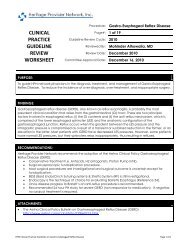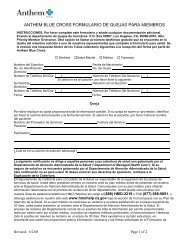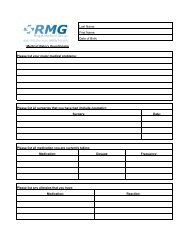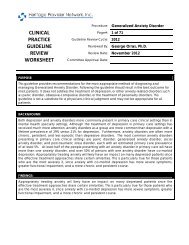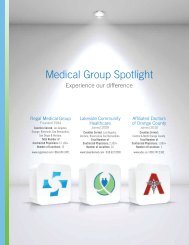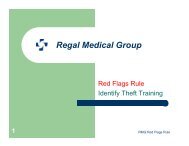Guide to Clinical Preventive Services 2012 - Agency for Healthcare ...
Guide to Clinical Preventive Services 2012 - Agency for Healthcare ...
Guide to Clinical Preventive Services 2012 - Agency for Healthcare ...
You also want an ePaper? Increase the reach of your titles
YUMPU automatically turns print PDFs into web optimized ePapers that Google loves.
SCREENING FOR GENITAL HERPESCLINICAL SUMMARY OF U.S. PREVENTIVE SERVICES TASK FORCE RECOMMENDATIONPopulation Asymp<strong>to</strong>matic pregnant women Asymp<strong>to</strong>matic adolescents and adultsDo not screen <strong>for</strong> herpes simplex virus.RecommendationGrade: DDo not screen <strong>for</strong> herpes simplex virus.Grade: DScreening TestsMethods <strong>for</strong> detecting herpes simplex virus include viral culture, polymerase chain reaction, and antibody-based tests, suchas the western blot assay and type-specific glycoprotein G serological tests.InterventionsThere is limited evidence that the use of antiviral therapy inwomen with a his<strong>to</strong>ry of recurrent infection, or per<strong>for</strong>manceof cesarean delivery in women with active herpes lesions atthe time of delivery, decreases neonatal herpes infection.There is also limited evidence of the safety of antiviraltherapy in pregnant women and neonates.Antiviral therapy improves health outcomes in symp<strong>to</strong>maticpersons (e.g., those with multiple recurrences); however,there is no evidence that the use of antiviral therapyimproves health outcomes in those with asymp<strong>to</strong>maticinfection. There are multiple efficacious regimens that maybe used <strong>to</strong> prevent the recurrence of clinical genital herpes.Balance of Benefits and HarmsThe potential harms of screening asymp<strong>to</strong>matic pregnantwomen include false-positive test results, labeling,and anxiety, as well as false-negative tests and falsereassurance, although these potential harms are not wellstudied. The USPSTF determined that there are no benefitsassociated with screening, and there<strong>for</strong>e the potential harmsoutweigh the benefits.The potential harms of screening asymp<strong>to</strong>matic adolescentsand adults include false-positive test results, labeling,and anxiety, although these potential harms are not wellstudied. The USPSTF determined the benefits of screeningare minimal, at best, and the potential harms outweigh thepotential benefits.Other Relevant USPSTFRecommendationsThe USPSTF has made recommendations on screening <strong>for</strong> chlamydia, gonorrhea, HIV, and several other sexuallytransmitted infections. These recommendations are available at http://www.uspreventiveservicestask<strong>for</strong>ce.org/.For a summary of the evidence systematically reviewed in making this recommendation, the full recommendation statement, and supporting documents,please go <strong>to</strong> http://www.uspreventiveservicestask<strong>for</strong>ce.org/.27




